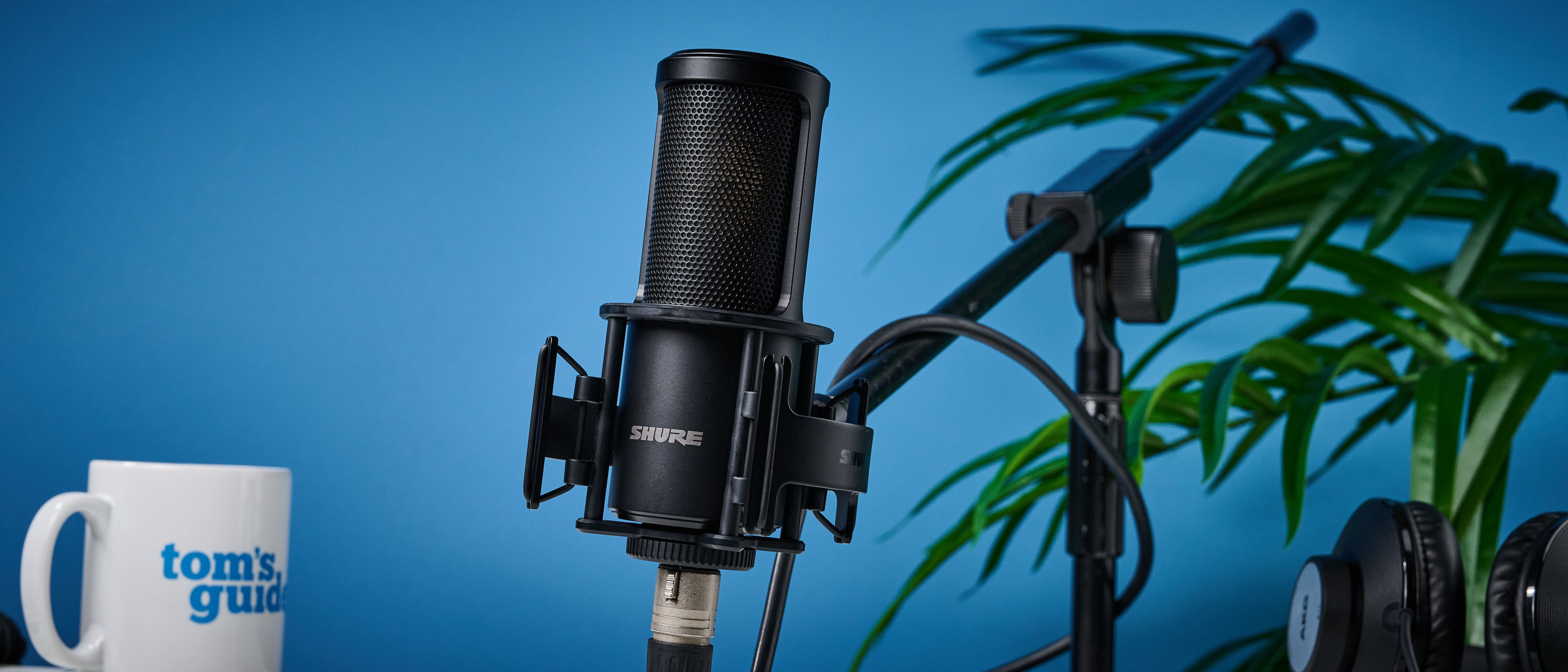Tom's Guide Verdict
Shure’s beginner-friendly XLR microphone, the SM4, is a fantastic gateway into the world of home studio musicianship. The 1-inch dual-diaphragm capsule makes every recording sound detailed and close-by.
Pros
- +
Clever RF interference shielding
- +
Excellent recording quality
- +
Ideal for musicians
- +
Simple to use
- +
Sleek design
Cons
- -
No XLR cable included
- -
Not great for speech
- -
Pop filter could be better
Why you can trust Tom's Guide
The Shure SM4 microphone, released in 2024, is one of the best microphones for beginner home musicians who don’t want to skimp on quality. Seeing as some professional recording microphones from Shure hover around the $900 mark, this $199 mic is perfect for the beginner home musician or sound engineer.
With a 1-inch dual-diaphragm condenser capsule, which I’ll get into later, the SM4 is adept at picking up bass and treble evenly. I was super impressed with how the SM4 translated the nuance of an acoustic guitar — the recording made me feel as if I was in the room with the guitar.
But is it enough to justify its $199 price? Find out in this Shure SM4 microphone review.
Shure SM4 microphone review: Cheat sheet
- What is it? A beginner-friendly home studio microphone designed for musicians
- Who is it for? Predominantly musicians
- What does it cost? From $199 / £195 — perfect for beginners
- What do we like? The sonorous, feel-it-in-your-bones instrument recording and high-quality audio translation
- What don’t we like? I wouldn’t use it as a podcast mic, and this is not a complaint, merely a warning: you’ll need an XLR converter if you haven’t got an audio interface or mixing desk.
Shure SM4 microphone review: Specs
Shure SM4 microphone review: Price & Availability
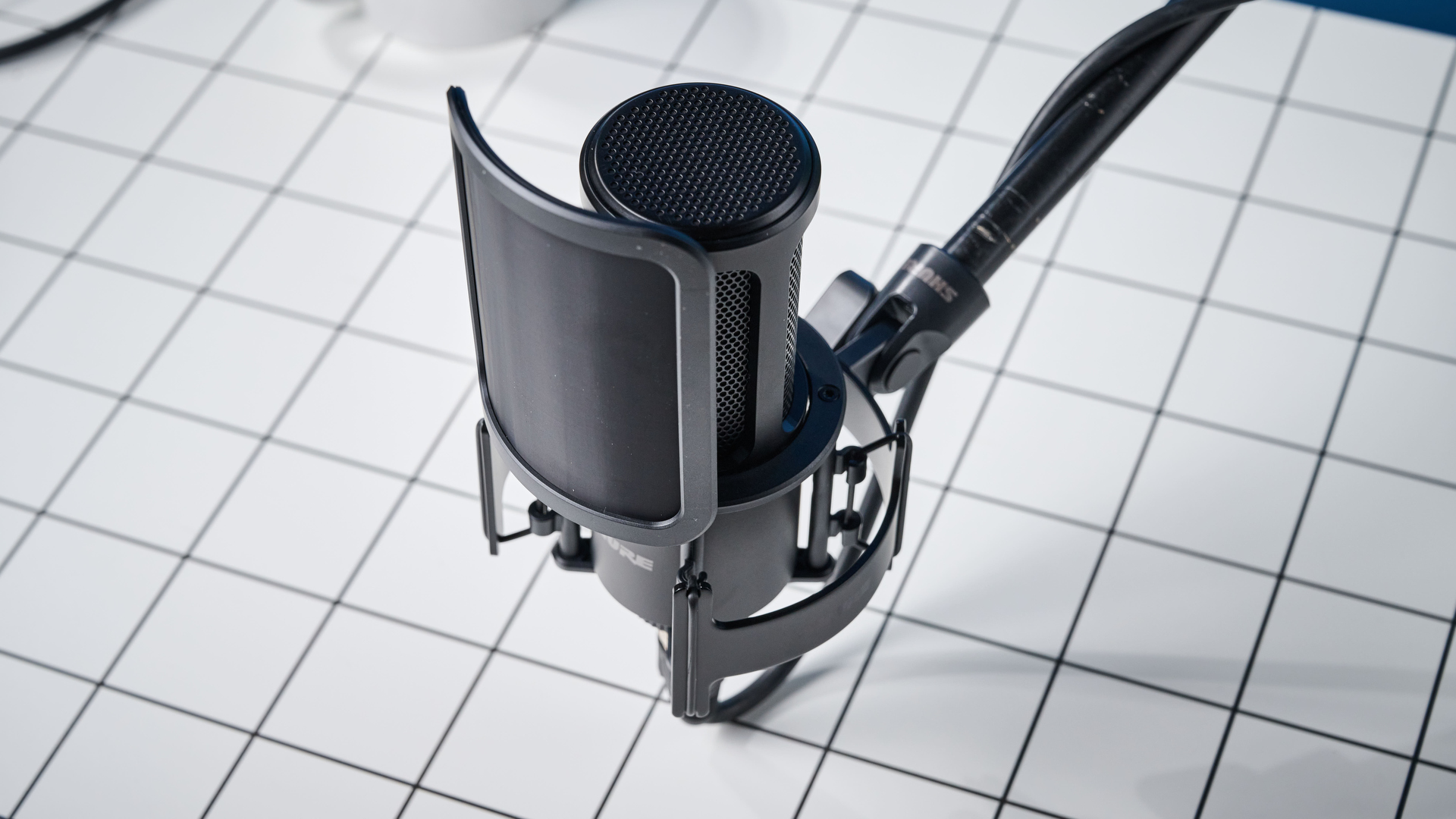
The SM4 comes with a couple of options: you can get the mic by itself or in the studio kit. Alone, the mic is $199 at Amazon U.S., and the studio kit is $269 at Amazon U.S.. In the U.K., it’s £195 at Amazon for just the mic or £249 at Amazon for the studio kit. With the studio kit, you get a shock mount and a pop filter, so I’d recommend investing in the kit unless you already have SM4-compatible mounts and filters.
If you’re not a musician, you probably don’t need the SM4. For broadcasting or podcasting, I’d recommend XLR mics like the SM7B or the MV7+. For beginners, I’d recommend the Shure MV6 ($149), or maybe an even cheaper mic like the Cherry Ngale R ($99). These all have features better tailored towards speech than music.
Shure SM4 microphone review: Design & Controls
- Camera-ready recording
- Well-made
- Minimal setup
As I’ve come to expect with Shure microphones by now — I’ve tested almost its entire flagship lineup — the SM4 is gorgeous. I can easily see this being right at home in the most sophisticated of studios. There’s a classically beautiful feel to the weighty microphone, whether that’s due to the all-metal design or the large condenser capsule, or perhaps both — either way, it’s a stunner. It’s well-made, too, with a sleek metal exterior and secure casings.
The XLR port is at the bottom of the mic so you can easily mount the microphone. I used my Shure desktop stand secured to the shock mount, which was simple to set up. The SM4 will work with a Shure boom arm, too. There’s a magnetic pop filter attachment in the studio kit alongside the shock mount.
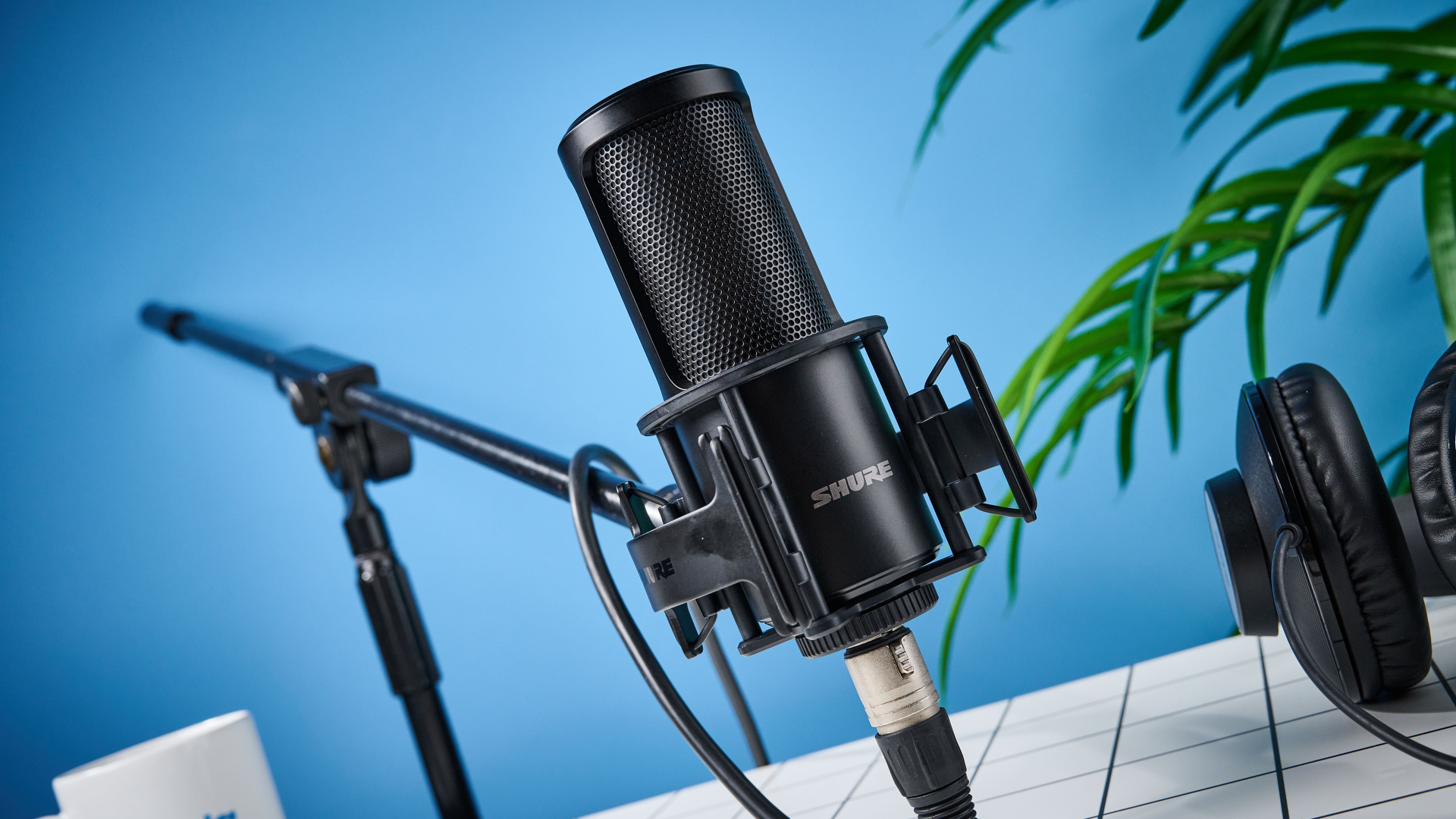
Given that the SM4 is an analog microphone, the setup is minimal. You don’t need to customize settings via an app or play around with features. You simply connect the mic to your interface using an XLR cable (not provided, annoyingly) or into your laptop using an XLRUSBC adapter. If you connect the SM4 to your laptop using the XLR adapter, it’ll show in Motiv Mix as ‘Shure MVX2U’. While there aren’t as many features as you’d get with digital mics like the MV7+ and the MV6, you can still add vocal tones and adjust things like mic position and gain.
Shure SM4 microphone review: Features & Connectivity
- 140dB Max SPL
- Record directly into music software
- RF shielding
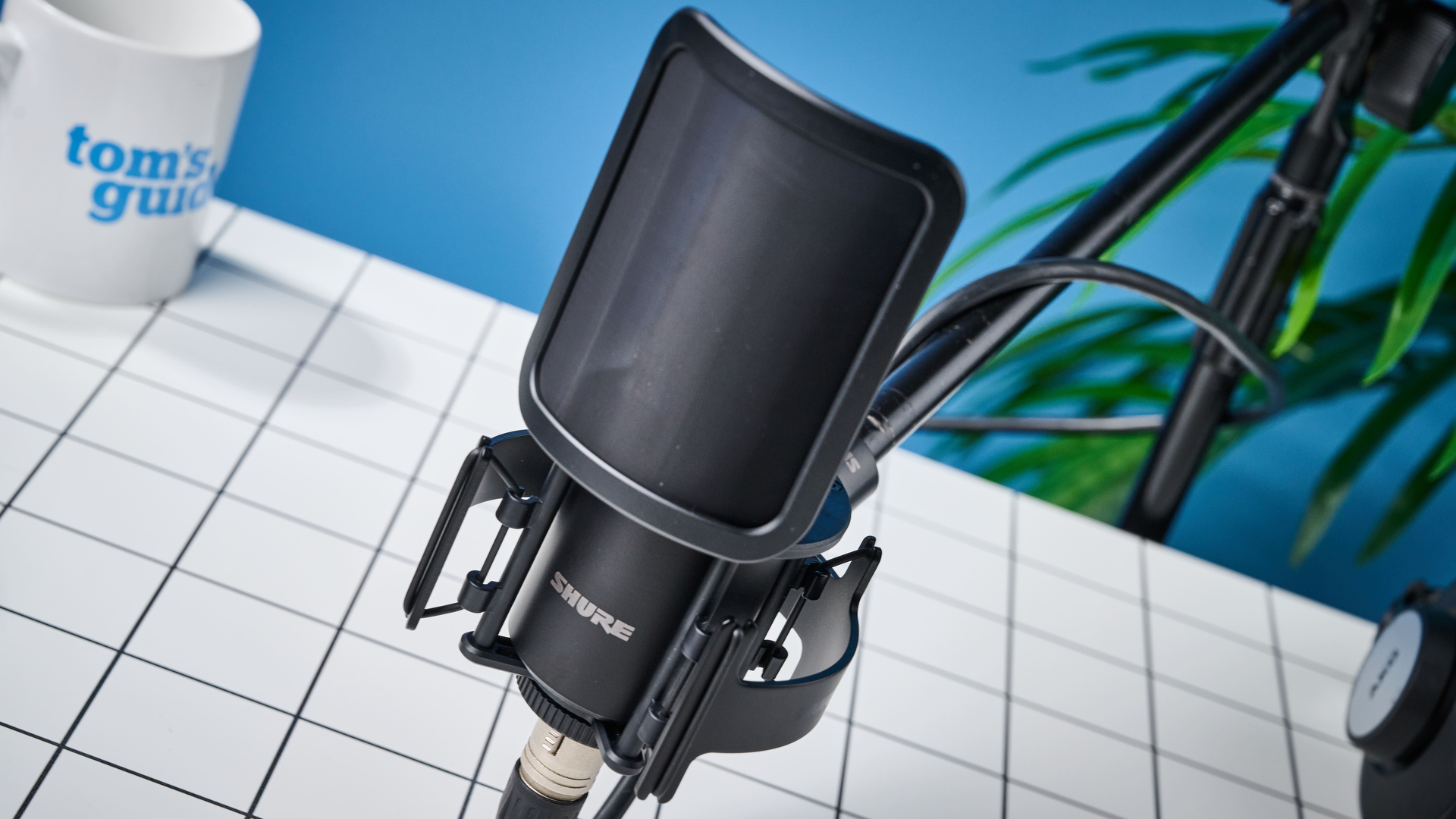
The SM4’s 1-inch dual diaphragm capsule means the sound frequency is more balanced over the cardioid polar pattern than a single diaphragm capsule. In real terms, this means the SM4 will be able to pick up higher frequencies and lower frequencies evenly, as opposed to clipping. The max SPL (how loudly the mic can hear) is also higher — 140dB.
The SM4 is a studio microphone, which means it only has XLR connectivity. If you have the Shure XLR-USBC adapter (as I do, which I used for these tests), you’ll be able to convert it to a plug-and-play USB mic. With the XLR adapter, I was able to record directly into GarageBand. However, if you use the SM4 right out of the box, it’s just XLR.
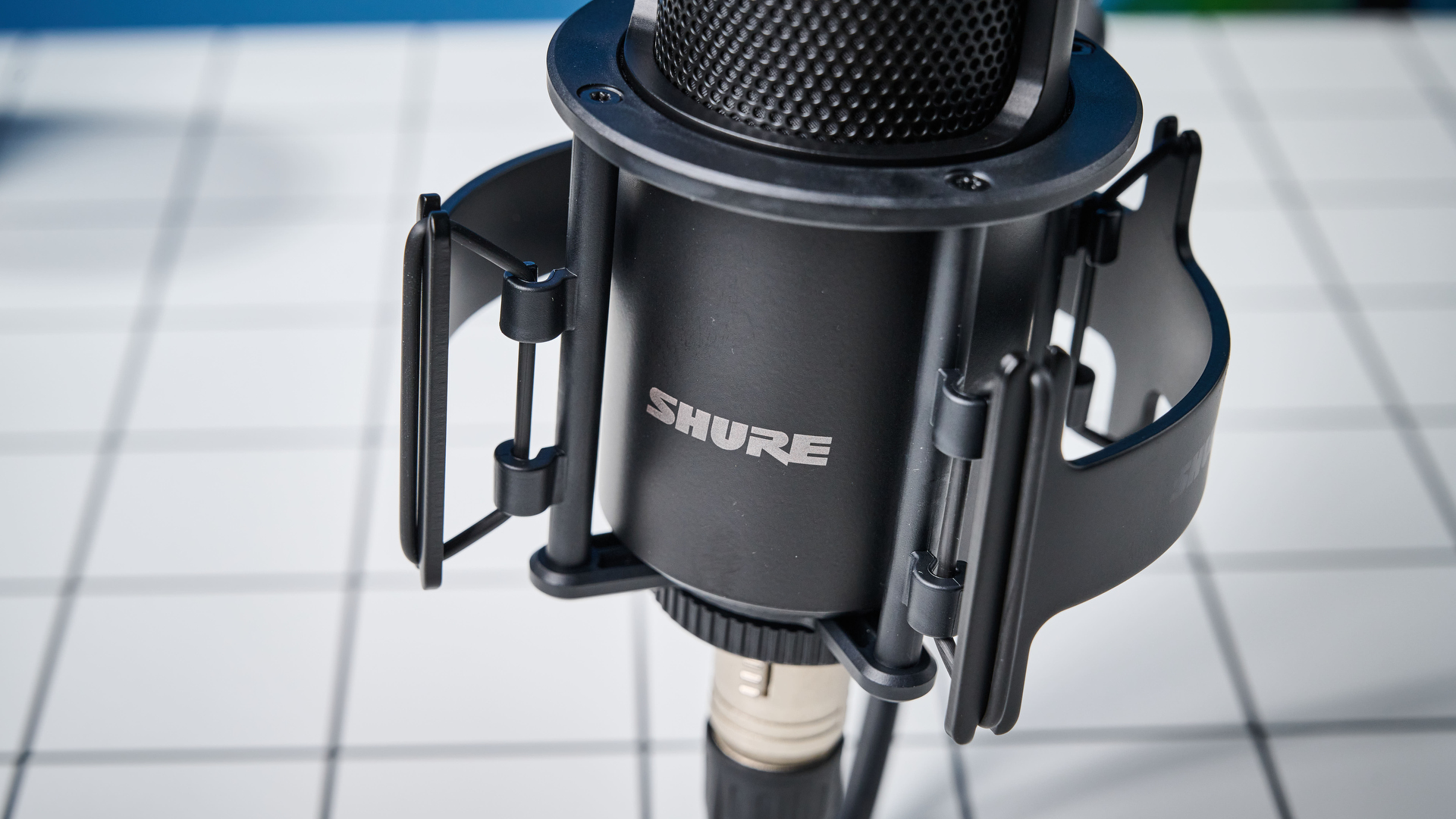
As touched on above, there’s a magnetic physical pop filter and a shock mount in the studio kit but no desktop stand or boom arm attachment.
Perhaps the most attractive feature is the Interference Shielding Technology. You can’t switch this on or off and there’s no visual queue that it’s working — it’s just kind of on at all times. In essence, it blocks RF interference from phones, Wi-Fi routers, and even things like baby monitors and thunderstorms. While testing, I didn’t notice any RF interference picked up by the mic, likely as a result of the shielding tech.
Shure SM4 microphone review: App
- Motiv Mix only accessible with an XLR adapter
- Seamless integration with music-making apps with adapter
- Limited, but useful, Motiv Mix access
As mentioned in the ‘Design & controls’ section, the SM4 is an analog microphone, so it doesn’t technically come with app features. However, with the Shure XLR-USBC adapter, you can access a watered-down version of the great companion app Motiv Mix.
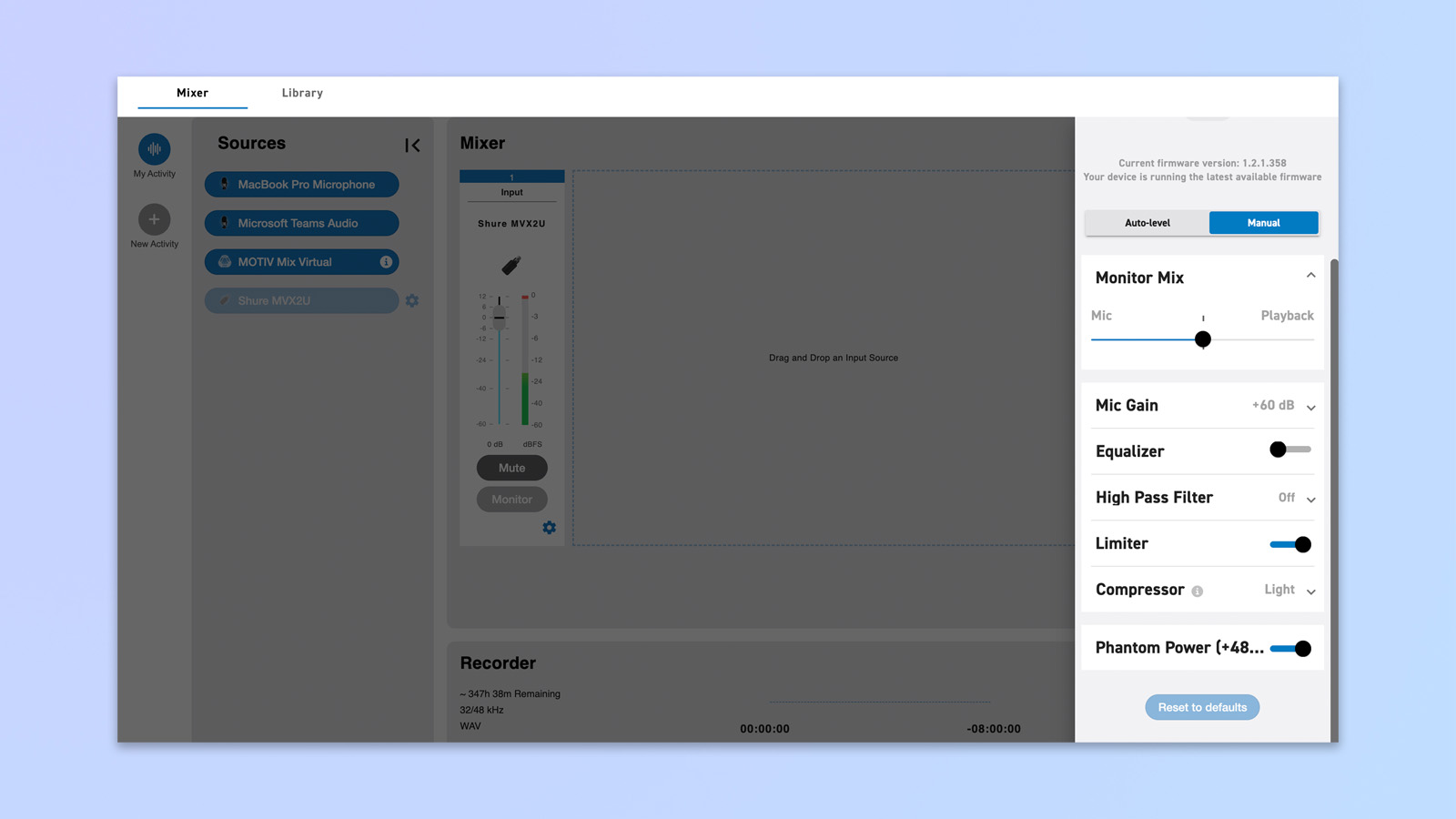
The watering-down means you don’t get Shure’s fantastic features like the Real-Time Denoiser or Digital Popper Stopper (which I loved in the MV7+, MV6, and MV7i), but you do get access to basic controls like gain adjustment, high-pass filter (low-cut filter), turning on or off the built-in limiter, and turning on or off equalizer. I particularly appreciate the mic distance setting, where you can toggle the mic as ‘near’ or ‘far’ which decreases and increases gain respectively. For my testing, I activated the limiter, deactivated the equalizer and high pass filter, and kept the compressor as ‘light’.
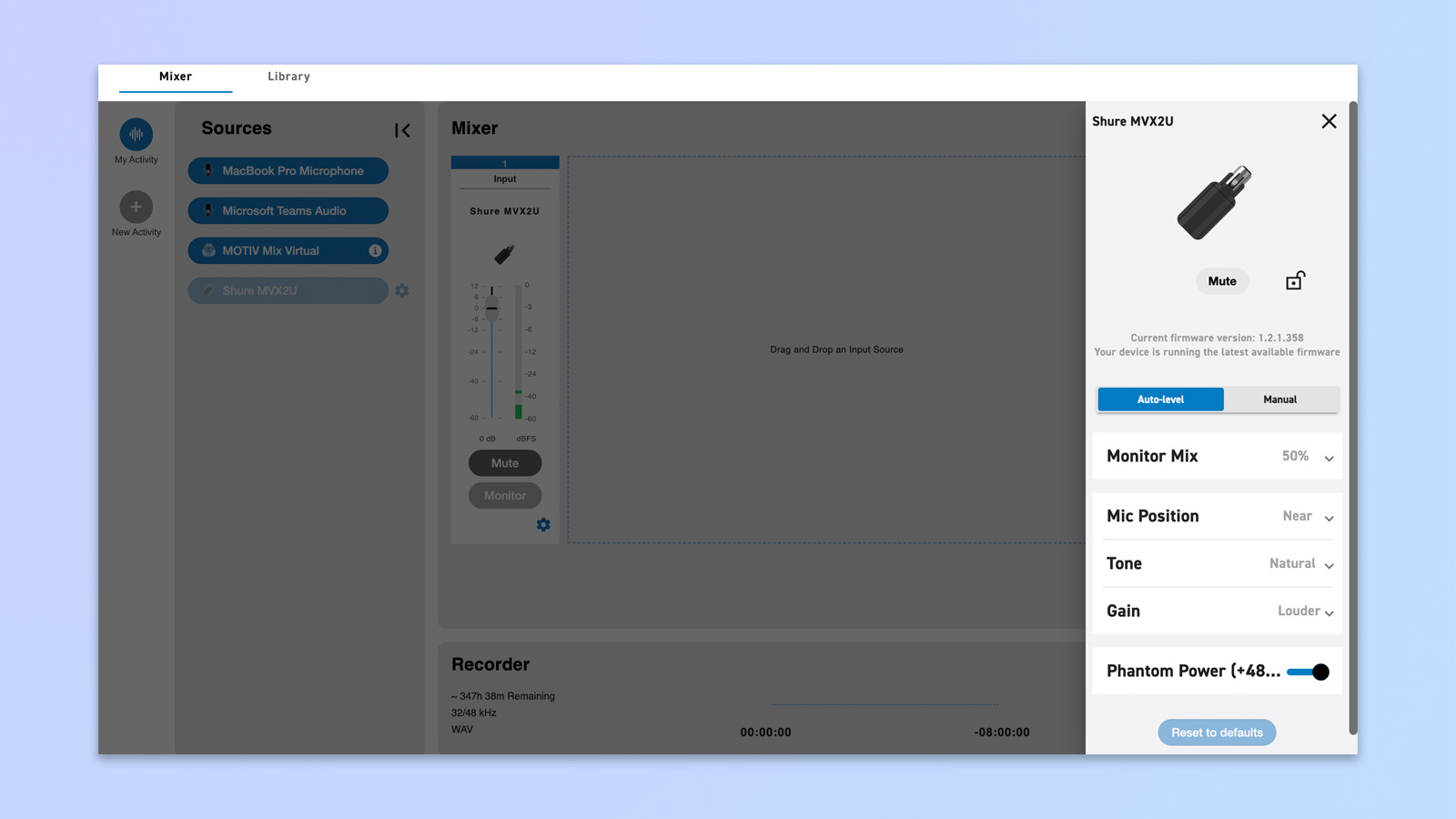
However, if you’re using the SM4 with an analog interface, you won’t get any Motiv Mix access.
Shure SM4 microphone review: Audio quality
- Condenser mic accentuates detail
- Excellent guitar recording
- Not for podcasters
As the SM4 is designed for musicians, I had to get my musically-minded colleague Nikita into the studio to help me out. First, she played ‘Smelly Cat’ from Friends and ‘Hotel California’ by The Eagles. The SM4 perfectly captured the layered sonorous sound from the acoustic guitar and I could feel the vibrations from the strings.
Obviously if you’re using this mic to record music, you won’t use the raw .wav files beyond production, but I was still extremely impressed with the quality of the SM4’s raw recording. This is with absolutely no editing — just a conversion to an MP3 file, which will have lost quality.
Now although I know this microphone is intended for musicians, I needed to test it with my standard vocal tests. Musicians don’t only use instruments, mind, so vocalists will need to know the SM4’s vocal recording quality. Below you’ll find a clip of me speaking with the pop filter turned on.
I think the SM4 is a great microphone, but I wouldn’t recommend it for people wanting to record predominantly speech. While the clip above still sounds good, there is a definite ‘condenser’ style harshness — or supreme clarity depending on your use case — to the recording. It doesn’t feel as warm as the Shure MV7+, which is a dynamic mic.
Here is the same recording but with the physical pop filter removed.
The clarity here is astounding: sorry to gross you out, but you can hear every detail of my mouth sounds. Perfect for musicians trying to get that tear-jerking vocal performance down, but not recommended for podcasters, streamers or content creators.
In short, this is a fantastic microphone for musicians with a sound-proofed/treated (or simply really quiet with good acoustics) room in which to record. If that’s not you, this microphone might pick up a little too much unwanted noise, like your air-con, or a vacuum going upstairs.
Shure SM4 microphone review: Verdict
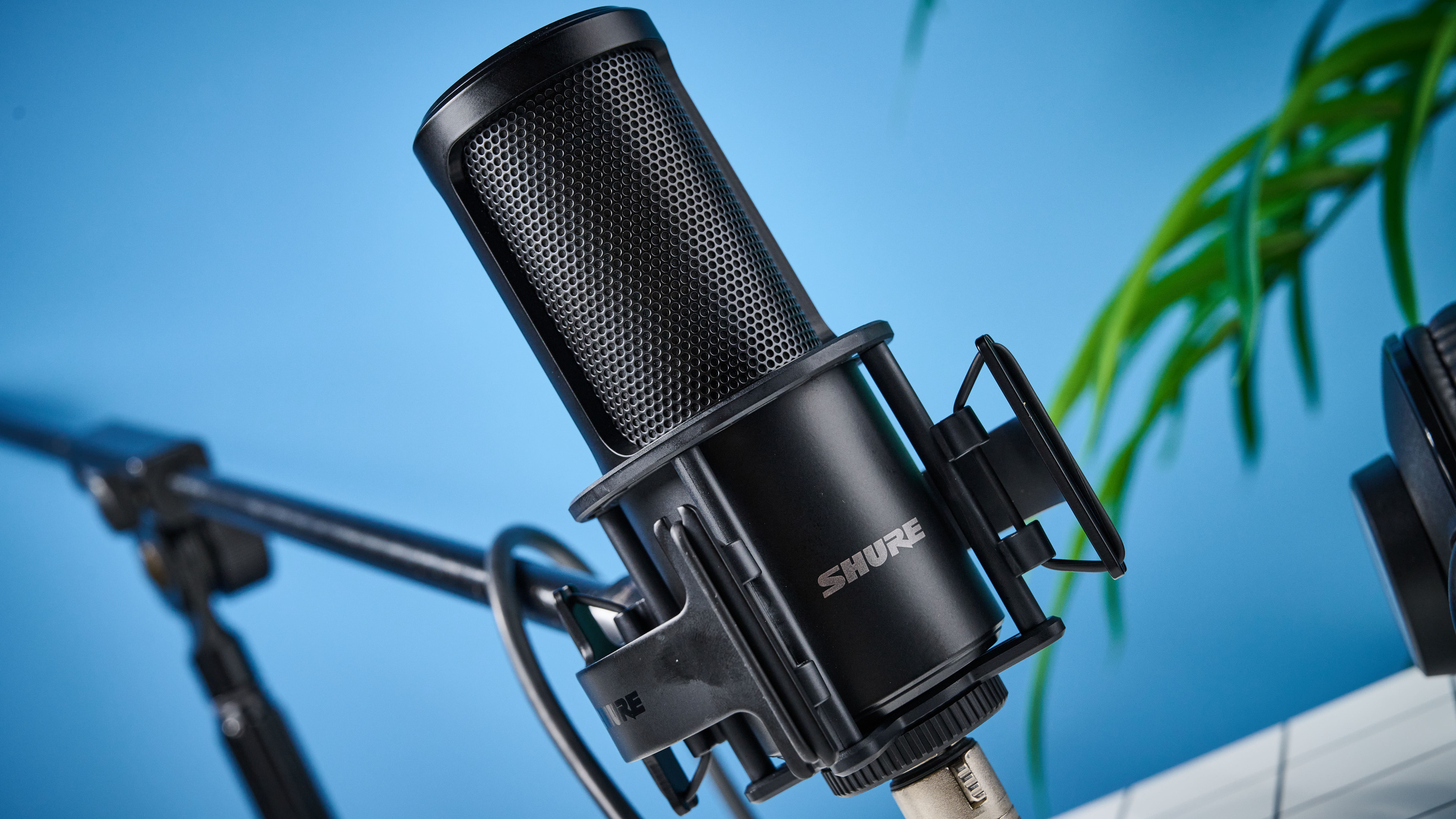
The Shure SM4 microphone is better than any other Shure mics I’ve used for musicians. Even the MV7+ (which was designed partly with musicians in mind but predominantly aimed at broadcasters, podcasters, and content creators) doesn’t translate vocals this clearly. With the MV7+ there’s a warmth and a closeness, whereas with the SM4, there’s that closeness, but you can certainly tell the SM4 is a condenser microphone. There’s closeness, but in detail. There’s no blurring of edges — as you’d find on a dynamic mic that is designed to make untreated rooms sound treated, or to be more forgiving for ambient noise. The SM4 won’t make your audio sound treated from the get-go. That’s what makes it a musician’s mic: it picks up on all that detail.

Where the SM4 really excelled was recording guitar. Even though I wasn’t in the room during the recording, upon listening to the clips, I couldn’t help but feel like I was mere inches from the guitar strings. That’s what the SM4 is best at: helping musicians make their listeners feel at one with the music.

Erin Bashford is a staff writer at Tom’s Guide, covering reviews. She has a Masters in Broadcast and Digital Journalism from the University of East Anglia and 7 years of experience writing music, events, and food reviews. Now she’s turned her attention to tech for Tom’s Guide, reviewing everything from earbuds to garlic crushers. In her spare time you can find her reading, practising yoga, writing, or stressing over today’s NYT Games.
